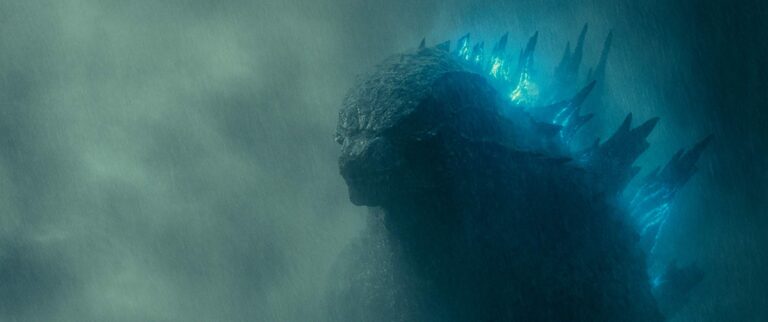I was largely a fan of the 2014 Godzilla reboot, thanks in no small part to the efforts of director Gareth Edwards, who eschewed the big-budget tentpole rulebook in favor of something with a slower pace and a more gradual buildup to the big action moments. It’s unfortunate that Edwards didn’t return for the sequel, because Godzilla: King of the Monsters ignores nearly everything that made the previous film so enjoyable.
The emergence of Godzilla and other so-called “Titans” has become a conundrum for the various world governments — particularly the United States, who seek to bring the shadowy Monarch corporation under military control in order to assess (and possibly terminate) the creatures. During a congressional hearing, Dr. Ishiro Serizawa (Ken Watanabe) advises against this course of action, as he believes most of these creatures — Godzilla especially — are benevolent, but the political powers of the world are less convinced.
Matters become a bit more complicated when a Monarch containment site housing a newly born Titan is raided by Alan Jonah (Charles Dance), a vicious eco-terrorist obsessed with releasing the Titans and “restoring the natural order.” He kidnaps scientist Emma Russell (Vera Farmiga) and her daughter Madison (Millie Bobby Brown) and confiscates the ORCA, a sophisticated bit of tech that uses sound waves to communicate with, and potentially control, the Titans. Cue Emma’s ex-husband Mark (Kyle Chandler), a former Monarch scientist with expertise in animal behavior, to track down his family before all hell can break loose.
Granted, if Mark is successful then we have no movie, so rest assured the script throws numerous obstacles in his path, each more complicated and convoluted than the last. Meanwhile, a pair of new colossal creatures enters the fray: the winged Rodan, birthed from the bowels of a fiery volcano, and three-headed Ghidorah, who can regenerate severed appendages and summon massive, hurricane-like storms. The latter talent turns out to be more egregious than exciting, as it ensures that every confrontation involving Ghidorah feels almost exactly the same, with black clouds, pouring rain, and a generous helping of lightning (which the creature can also expel from any of its three heads). Throw in director Michael Dougherty’s affection for extreme close-ups and rapid cuts, and the fact that most of these battle occur at night, and there are times where it’s near impossible to make sense of the onscreen action.

The villain’s central thesis, that allowing the Titans to rampage across the globe will ultimately save the planet because the radiation left in their wake allows life to flourish, is patently ridiculous. Even more laughable is the dialogue, full of techno-babble about bioacoustics and broadcast signals, clichéd battle chatter from O’Shea Jackson and Aisha Hinds, nuggets of fortune-cooke wisdom (literally) from Watanabe’s stoic scientist and pitiful one-liners from Bradley Whitford. Practically nothing involving the human characters works, but Dougherty seems oblivious to this fact, frequently stalling the film’s momentum by shifting focus away from the monster battles and back to these paper-thin archetypes
On the rare occasion the camera in Godzilla: King of the Monsters pans out enough to showcase its creatures, they’re truly awe-inspiring. Wide shots of Godzilla and Ghidorah charging toward each other across a cityscape are breathtaking, and when they collide it feels like the Earth is shifting. Buildings explode in showers of glass and steel, vehicles fly through the air like paper airplanes and entire city blocks are leveled with a sweep of their tails or a swipe of their claws. But even these moments of gratification are unable to counterbalance the film’s laundry list of defects and misfires: the film is bloated, overlong and often boring. We can only hope a few lessons will be learned prior to Godzilla’s eventual cinematic showdown with Kong.

